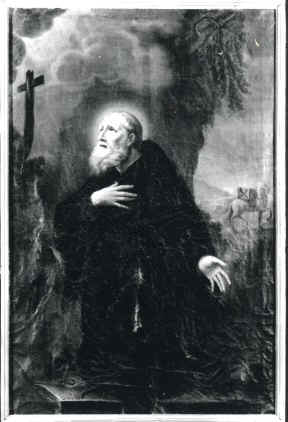
Blessed Gregory Celli - 11th May
11 May: Blessed Gregory Celli, Religious
Blessed Gregory’s life is a mixture of historical truth and legend. This because no documents of his time are available and biographies concerning him are comparatively recent. Thu, we have the ideal conditions so that, as is not unusual in writings on saints, we have an interesting mixture in which, as time passes, it becomes more difficult to distinguish between the truth and what is pure imagination. One should remember that mediaeval writings on saints did not have the truth as its main aim, as is the case nowadays, but more with the intention of presenting a model of sainthood.
What is sure is the fact that this particular blessed religious binds together two important episodes of history, that is the so-called Augustinian pre-history and the proper and true of the Order from when it was established in 1244. Blessed Gregory was able to combine both these distinct timescales because of his long life, as it appears that he died well after his hundredth birthday.
He was born around 1225 in the town of Verrucchio, near to the harbour town of Rimini, where he was probably brought up in a rather wealthy family; this because biographical sources mention that his parents wished him to become a lawyer, following his father’s profession. In his birthplace there was a Gamboniti convent, i.e. of those religious set up by Blessed John Bono and who, in 1256, were associated with the Order of Hermits of St Augustine of Tuscia so as to form – along with a number of other congregations – the Order of Hermits of St. Augustine. Blessed Gregory lived this formation experience of the Augustinian Order; he joined the Gamboniti but died as a member of the Order of St. Augustine.
Thus, he lived the earlier part of his life with the congregation of Gamboniti, for a time also as part of the same community where their own founder lived at Cesena. Before making his profession, he left all his wealth to the convent at Verruchio. Gregory was a religious who took his formation very seriously, and this fact helped so that he was chosen by the Superior of the Gamboniti so that Gregory took part in the resistance of the Katari heresy, which had spread widely in that area of Italy. Thus, he spent a great part of his life preaching and by his example, so much so that he used attract people to him - without so wanting – through the admiration and respect of the population. Already at an advanced age, in the year of the First Jubilee in the Church’s history, i.e. the one in 1300, he went to Rome as a pilgrim on the tombs of Peter and Paul. He had occasion to meet with the General of the Augustinians, Blessed Augustine from Tarano with whom he shared his dream, now that he had concluded his work as a preacher, to retire to some isolated place as a hermit.
The General gave him the necessary permission and immediately Gregory returned to his original vocation, that of forming part of a community of Augustinian hermits where their primary mission is a life of recollection, prayer and contemplation. Aged more than one hundred years he departed this life in the year 1343. As regards his death, the story is involved more with legend, so much so that it is said that his body was taken on the back of a donkey from near Rieti to Verrucchio, his birthplace, where he was met with a festive peeling of bells and to the amazement of the people there who, with due respect, buried him under the altar of the Church. It is said that even the donkey on which he had made his last voyage merited a special burial, in recognition for what it had done.
Although it appears that he was beatified in 1357, because of the loss of the documents evidencing this, in 1757 a fresh process was initiated to confirm his cult ab immemorabili. Pope Clement XIV recognised his cult in 1769. His remains are still until this very day in the Church of St. Augustine at Verrucchio.
The leading saints of the Augustinian order are a means so as Augustinians of all times find the roots of their vocation. Blessed Gregory is a clear example of this because, from what we know of his life, we see a strong wish for contemplative life bound together with action and preaching in the service of God’s people.
Fr. Josef Sciberras osa

